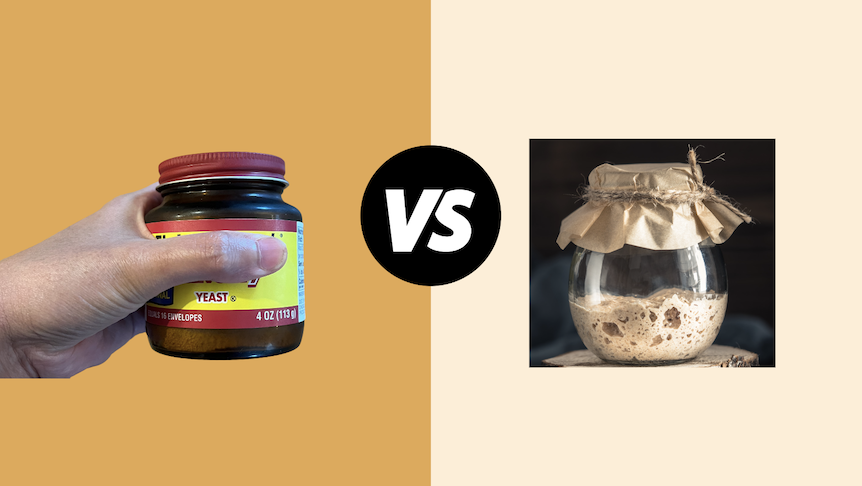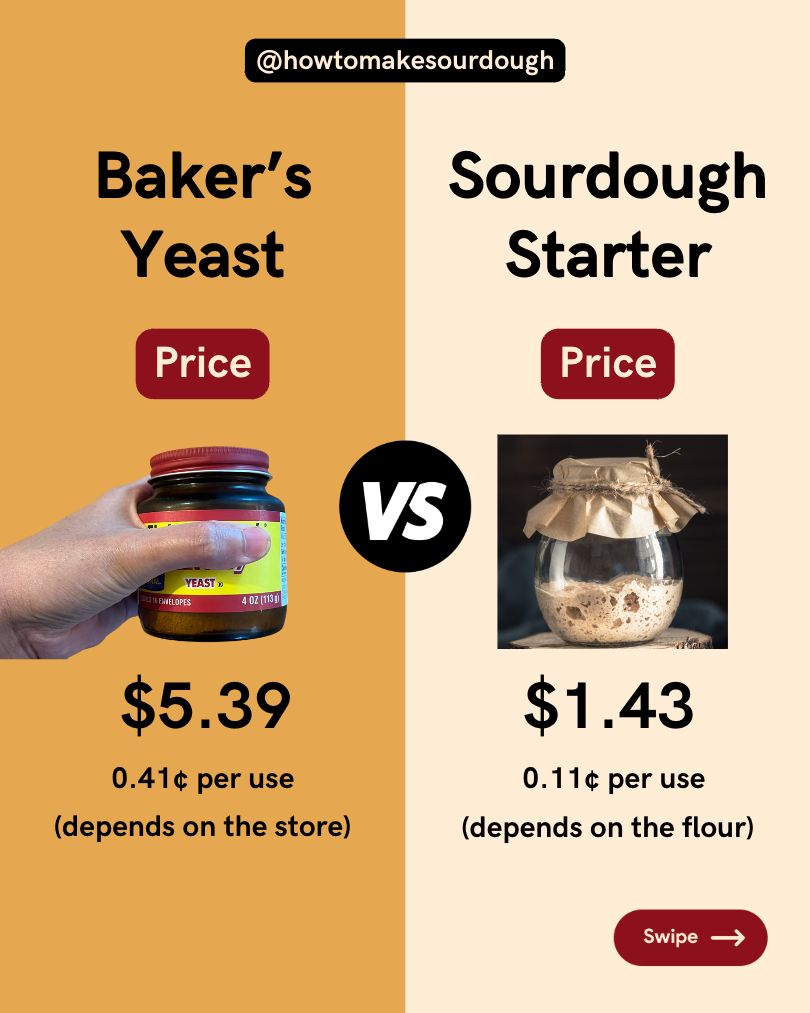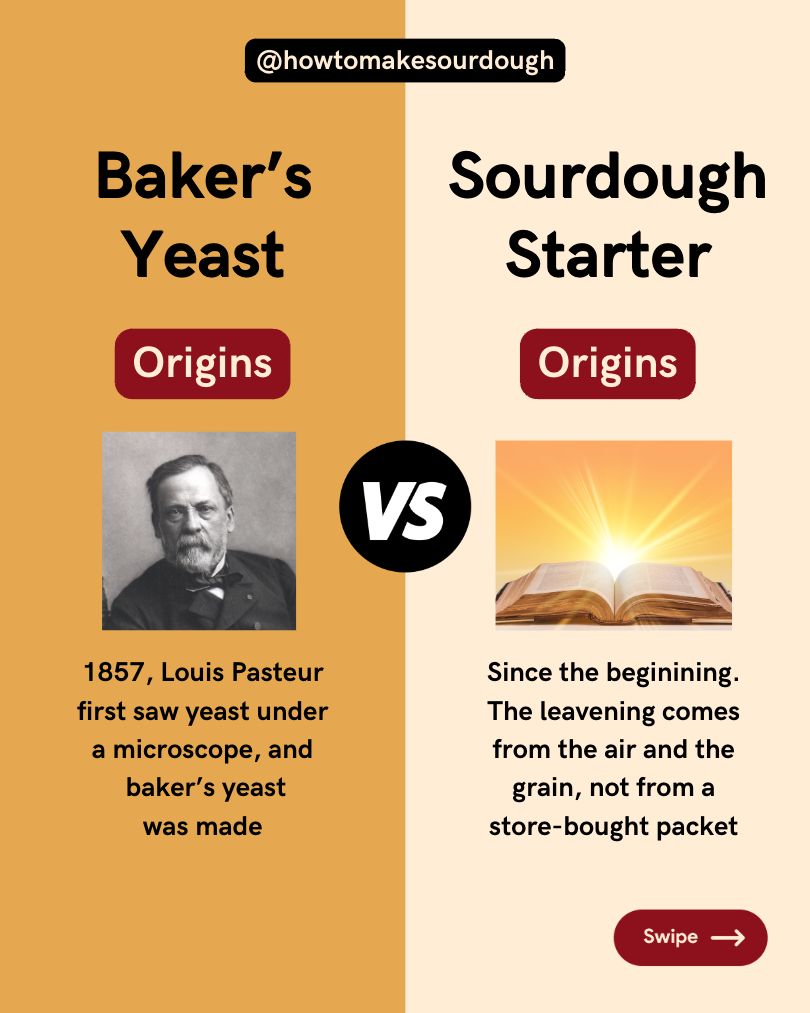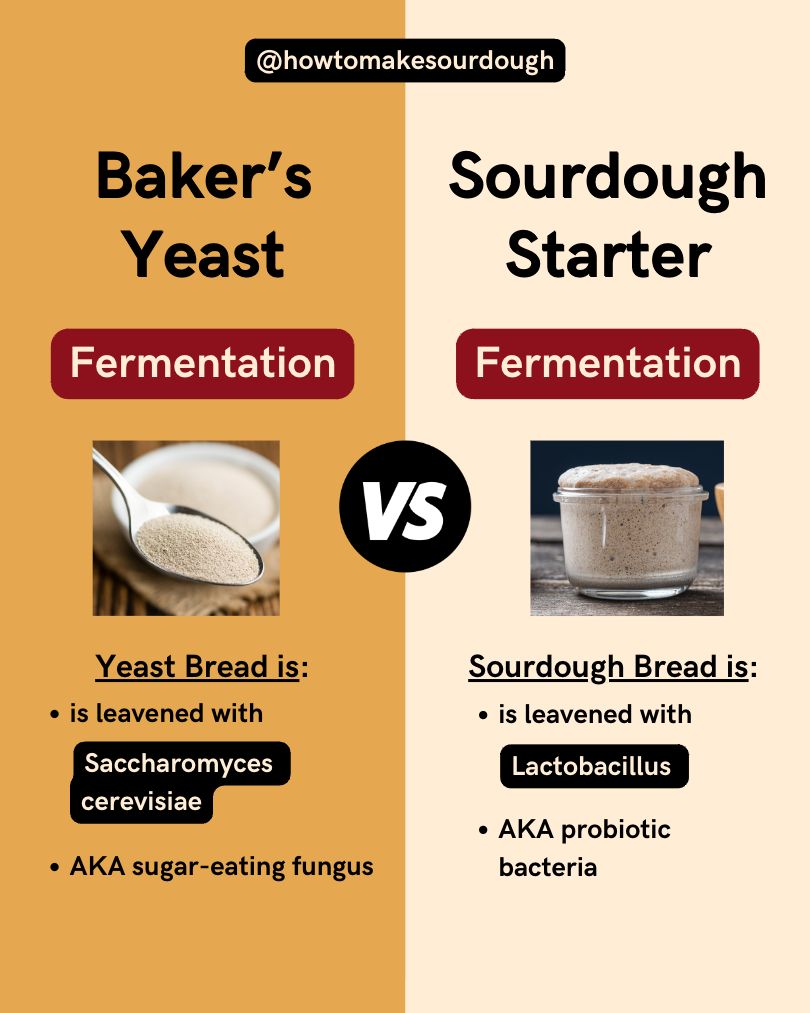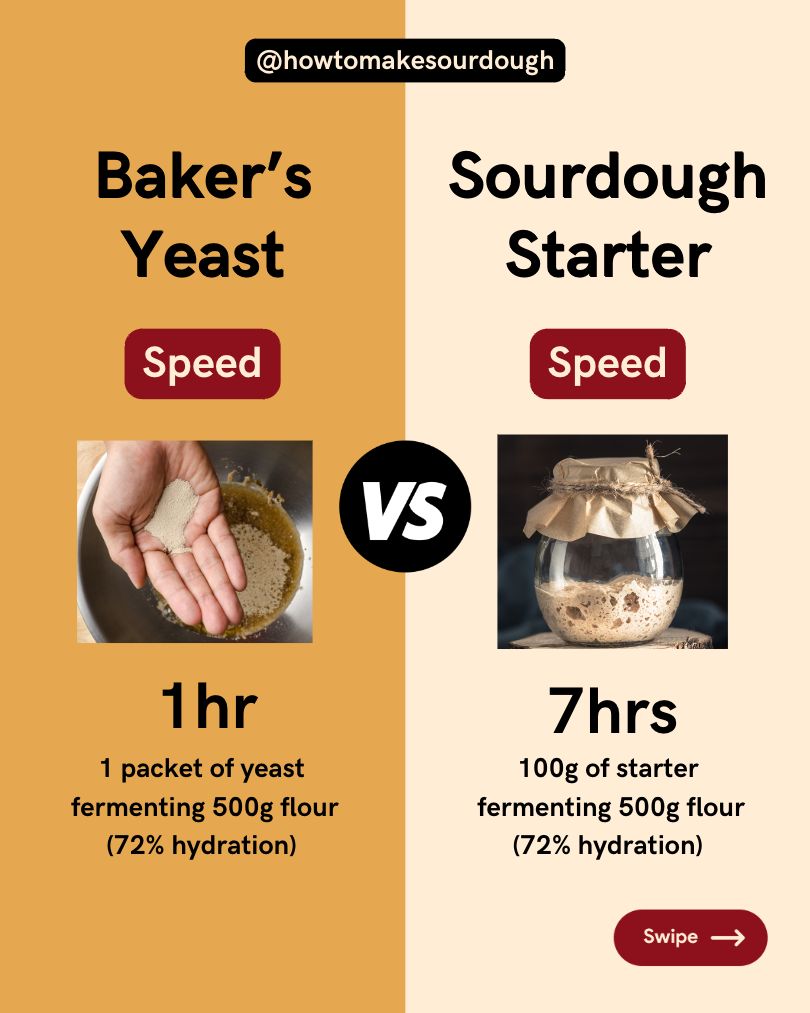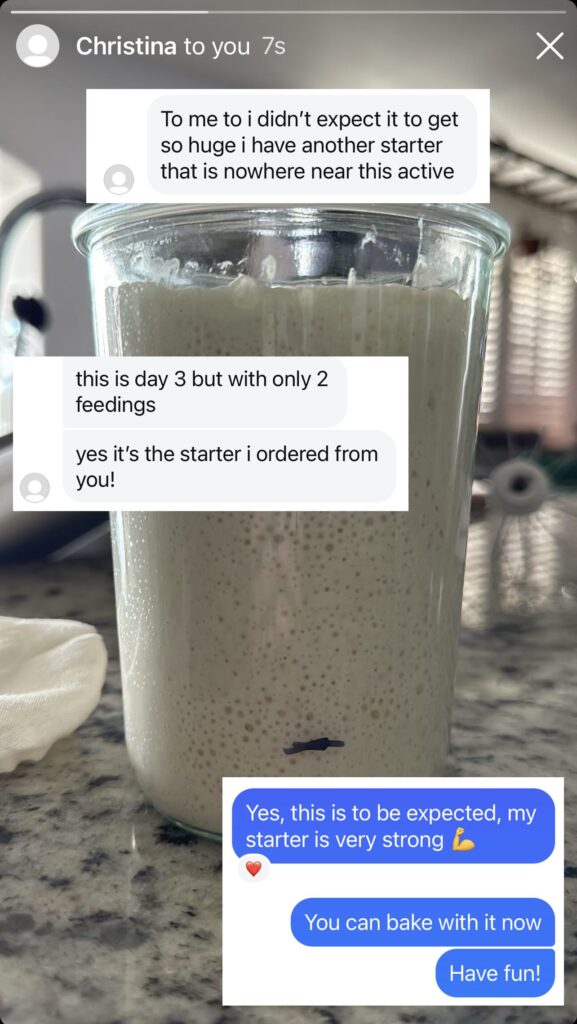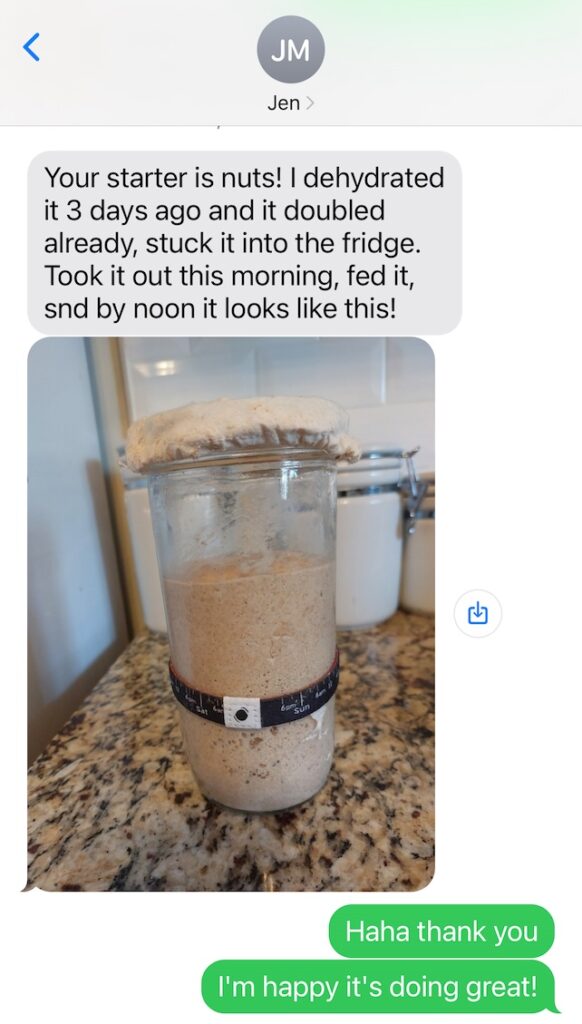Who’s the winner?
Good, the bad, and the ugly…
Everyone is doing their best —and I think bread baking is a spectrum. Some people are used to yeast bread and some feel at home with sourdough baking.
So I think a better way to frame it is:
Good, better, best.
I always say that homemade bread is good, sourdough bread is better, and homemade sourdough bread is best.
Whichever you choose, I think we can all agree that the “ugly” is store-bought bread. —the common enemy!
Slideshow Comparison
Check out the Yeast Bread vs. Sourdough Bread slideshow I made that summarizes the difference between the two…
Difference in Flavor
When you take a bite of sourdough bread and then taste a bread made with commercial baker’s yeast, you’ll notice a big difference.
Sourdough bread is richer in flavor and also boasts health benefits!
This is especially true when you taste fresh, homemade sourdough bread.
Compare that to bread made with commercial yeast –which often has a single, sweet, beer-like aroma that stands out in breads like brioche or a classic white loaf.
Using a sourdough starter can highlight other flavors, such as the caramel and earthy notes of whole wheat or the gentle sweetness of dairy.
This enhanced flavor comes from the diversity of microbes in a sourdough starter, which is something you won’t find in commercial yeast.
Sourdough bread is also often easier to digest, offers more bioavailable nutrients, and is generally better tolerated by people who have sensitivities to commercial yeast, sugars, or other additives.
That’s not to say that homemade bread made with conventional yeast are bad —they definitely have their place in home baking.
But sourdough is in a league of its own, with so many unique qualities that make it truly special.
Cost Per Use
Yeast
When you compare the cost of using commercial baker’s yeast versus a sourdough starter, there are a few key factors to consider.
Commercial baker’s yeast is generally inexpensive and easy to find, usually sold in packets or jars that can last for several batches of bread.
And each packet contains a measured amount of yeast, making it simple to use with consistent results.
What’s the catch?
Well, over time, the cost of continually buying yeast really adds up, especially if you bake frequently.
Sourdough Starter
On the other hand, a sourdough starter has a higher initial investment in terms of time and effort rather than money.
Once you’ve got your sourdough starter going, though, it can last indefinitely with proper care, making it essentially a one-time cost.
You only need to feed it regularly with flour and water, which are relatively cheap, and that’s it!
The longer you maintain your sourdough starter, the more value you get out of it, and you won’t need to keep buying yeast for every batch of bread you bake.
In the long run, using a sourdough starter can be more cost-effective than relying on commercial yeast, especially for frequent bakers.
While there’s an initial learning curve and a bit of daily maintenance involved, the benefits —both in terms of cost savings and the unique flavors you get —can make it well worth the effort.
Plus, there’s something special about having a living, thriving sourdough starter in your kitchen, ready to be used whenever you’re in the mood to bake.
Modern vs Ancient Origins
Yeast
Commercial baker’s yeast has a relatively modern origin, developed for consistency and convenience in baking.
It was first produced on a large scale in the 19th century, when scientists isolated specific strains of Saccharomyces cerevisiae, the yeast most commonly used in baking today.
This yeast was cultivated and mass-produced to provide bakers with a reliable and fast-acting leavening agent.
The goal was to create a yeast that would perform the same way every time, giving predictable results and reducing the time needed for bread to rise.
Sourdough Starter
Sourdough starters have ancient origins, dating back thousands of years.
Long before commercial yeast was available, bakers relied on naturally occurring wild yeast and bacteria in their environment to leaven bread.
A sourdough starter is essentially a mix of flour and water that captures these wild microbes from the air, flour, and even the baker’s hands.
Over time, this mixture ferments and develops a unique ecosystem of yeast and lactic acid bacteria, which not only leavens the bread but also gives it its rich and robust flavor.
Every sourdough starter is unique, influenced by its environment and the ingredients used, making it a true reflection of local traditions and conditions.
While commercial yeast was developed for uniformity and speed, sourdough starters carry with them a sense of history and place.
Each starter is a living link to the ancient methods of bread-making, offering a connection to the past and a deep, rich flavor that can’t be replicated by commercial yeast.
For many sourdough bakers, the process of cultivating and maintaining a sourdough starter is as rewarding as the bread it produces, making it a cherished part of their baking routine.

